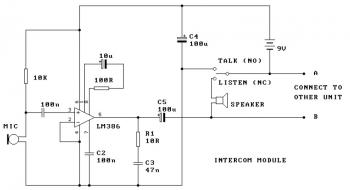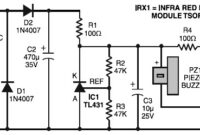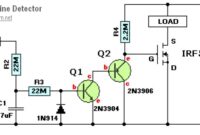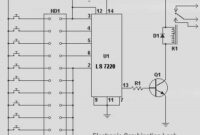This a two station intercom. It uses two wires to run between each intercom unit. Each is self contained with its own battery, speaker, microphone and amplifier circuit.
An LM386 audio power amplifier is used. It is widely available, used a minimum of external parts and is well suited to battery operation. It will give just over 1W into the 8 ohm speaker. The gain can be varied by the external components attached to pins 1 and 8. Gain can range from 20 (open circuit – pins 1 & 8 not connected) to 200 (pins 1 & 8 short circuited).
Stability at high frequencies is set by R3, C2 & C4. C4 decouples the power supply to the intercom for low frequency stability. C5 couples the output of the unit to the speaker.
Normally both switches are in the NC (normally connected) position. The 2 speakers are directly connected together and no power is drawn from by circuit. When a push-to-talk switch is pressed the speaker in that unit is disconnected and the NO connection (normally open) is connected. This connects the negative terminal of the battery to the circuit and power is delivered to it. The voice signal picked up by the microphone is sent to the remote speaker.
If both switches are pressed at the same time then both amplifier outputs will be connected together. The internal resistence of the 9V batteries limits the peak current which may arise and the IC will not be damaged. If a power pack or higher voltage supply is substituted instead of the 9V batteries then a 47 ohm series resistor should be added to a supply lead for protection.
Download the complete explanation of two station intercom circuit in PDF version:
[wpdm_file id=41]
Source: Kitsrus.com




